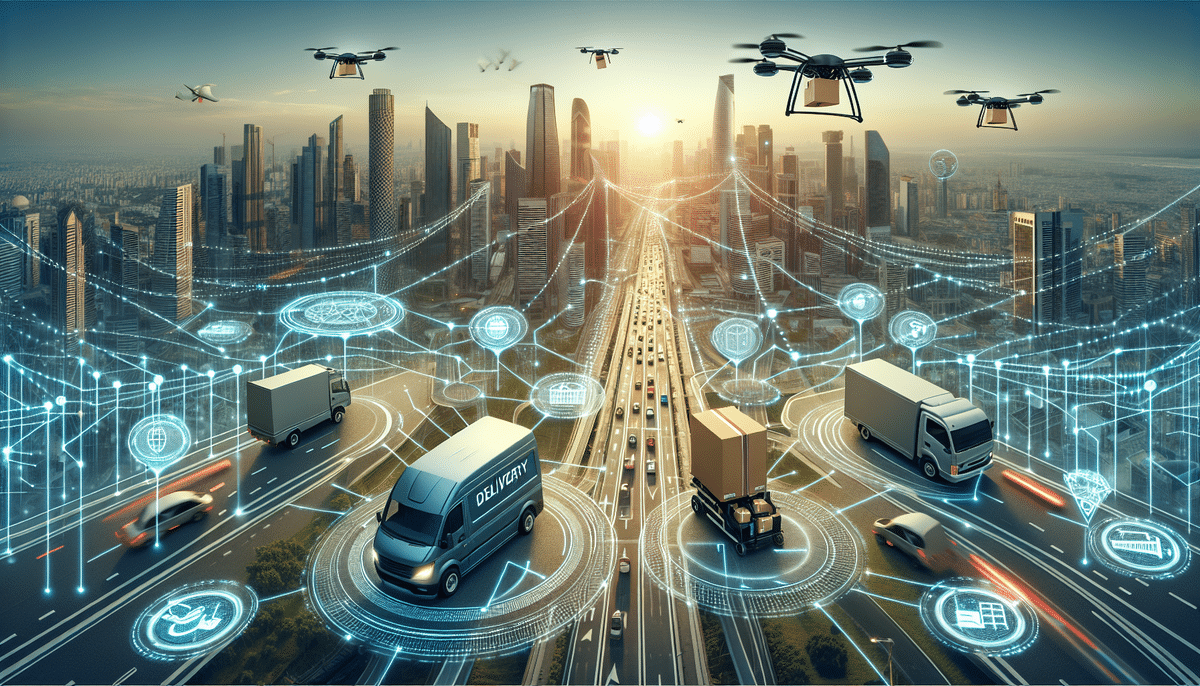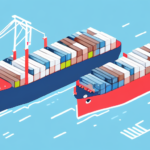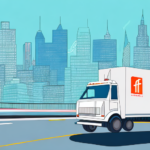Optimizing Delivery for E-Commerce Logistics
E-commerce has revolutionized the way we buy and sell goods, creating new opportunities for businesses and customers alike. However, delivery is a critical factor that can make or break a customer's experience and, consequently, the success of an e-commerce business. In this article, we'll explore the various facets of e-commerce logistics and strategies to optimize delivery for better customer experience and increased profitability.
The Importance of Efficient Delivery in E-Commerce
The delivery process is the final touchpoint that customers have with an e-commerce business. If the delivery is fast, convenient, and reliable, it creates a positive experience that increases customer loyalty and encourages repeat purchases. Conversely, slow, inconvenient, or unreliable delivery can lead to frustration, disappointment, and negative reviews, harming the business's reputation. Therefore, optimizing delivery is essential for building a robust e-commerce brand, reducing costs, and increasing profitability.
- Customer Loyalty: Efficient delivery enhances customer satisfaction, fostering loyalty and repeat business.
- Cost Reduction: Optimizing delivery routes and processes can significantly reduce operational costs.
- Brand Reputation: Reliable delivery services improve brand reputation and encourage positive reviews.
One way to optimize delivery is by using technology to track packages and provide real-time updates to customers. This not only improves the customer experience but also reduces the number of inquiries and complaints that customer service teams have to handle. Additionally, offering multiple delivery options, such as same-day or next-day delivery, can give customers more control over their orders and increase their satisfaction.
Efficient delivery also plays a crucial role in sustainability. By optimizing delivery routes and reducing the number of trips, e-commerce businesses can minimize their carbon footprint and contribute to a greener environment. This can be achieved by partnering with eco-friendly delivery companies or using electric vehicles for deliveries.
Analyzing the Impact of Delivery on Customer Satisfaction
A study published in ResearchGate found that 96% of customers consider delivery an essential factor in their shopping experience, and up to 56% are willing to abandon their cart if delivery options don't meet their expectations. Additionally, 60% of customers said that delivery directly impacts their likelihood of making repeat purchases. These statistics demonstrate that optimizing delivery can boost customer satisfaction and drive sales and revenue.
- Delivery Options: Offering multiple delivery options, such as same-day or next-day delivery, as well as free shipping.
- Customer Communication: Providing updates on the status of orders and estimated delivery times.
- Sustainability: Implementing eco-friendly delivery options appeals to environmentally conscious consumers.
Effective communication with customers throughout the delivery process builds trust and confidence in the brand, leading to increased loyalty. Moreover, sustainable delivery practices not only benefit the environment but also attract customers who prioritize ethical purchasing decisions.
Streamlining Your E-Commerce Logistics for Faster Deliveries
Streamlining e-commerce logistics involves optimizing the entire process, from receiving orders to delivering them to customers. This can be achieved by implementing efficient warehouse management systems, inventory management tools, and automated order fulfillment processes. Additionally, partnering with reliable third-party logistics providers that have extensive delivery networks and expertise in handling e-commerce shipments can enhance efficiency.
- Warehouse Management: Utilize automated systems to manage inventory and order processing.
- Third-Party Logistics: Partner with experienced logistics providers to leverage their networks.
- Packaging Efficiency: Ensure accurate and efficient packaging and labeling to prevent errors and delays.
Using eco-friendly packaging materials not only reduces environmental impact but also appeals to environmentally conscious customers. Offering multiple delivery options, such as same-day or next-day delivery, by partnering with local delivery companies or employing innovative delivery methods like drones or autonomous vehicles, can further improve customer satisfaction and provide a competitive edge in the market.
Understanding the Role of Technology in E-Commerce Logistics
Technology plays a critical role in e-commerce logistics, from optimizing inventory management to enabling real-time tracking and delivery updates. For instance, businesses can use automated routing algorithms and real-time vehicle tracking systems to increase delivery efficiency, reduce fuel consumption, and improve driver safety. Additionally, leveraging artificial intelligence and machine learning can help analyze delivery data, predict demand patterns, and optimize order fulfillment processes.
- Automated Routing: Optimizes delivery routes to save time and reduce costs.
- Real-Time Tracking: Provides customers with up-to-date information on their orders.
- AI and Machine Learning: Enhances predictive capabilities for demand and inventory management.
Emerging technologies such as drones and autonomous vehicles are transforming e-commerce logistics. Companies like Amazon and UPS are testing these technologies to deliver packages faster and more efficiently. Drones can reach remote or hard-to-access areas, while autonomous vehicles can lower delivery times and costs by reducing reliance on human drivers.
Furthermore, technology improves the customer experience through tools like chatbots and virtual assistants, which provide real-time support and personalized recommendations based on customer data and preferences. Enhancing the customer experience with technology fosters stronger customer relationships and increased loyalty.
Best Strategies for Managing Last-Mile Deliveries
Last-mile deliveries refer to the final leg of the delivery process, where the package is transported from the logistics hub to the customer's doorstep. This segment is often the most challenging and expensive part of the delivery process due to traffic, congested streets, and varying customer preferences. To manage last-mile deliveries effectively, e-commerce businesses can implement strategies such as:
- Crowdsourced Delivery Models: Utilize independent contractors for flexible and scalable delivery solutions.
- Geospatial Data Analytics: Use location-based data to optimize delivery routes and schedules.
- Flexible Delivery Options: Offer same-day, next-day, evening, or weekend deliveries to meet customer needs.
- Customer Self-Service: Provide pickup points and lockers for customer convenience.
Partnering with local delivery companies or independent contractors who understand local geography and traffic patterns can reduce delivery times and costs while improving customer satisfaction. Additionally, advanced technologies like drones and autonomous vehicles can streamline last-mile deliveries, especially in areas with high congestion or difficult terrain.
Providing real-time tracking and delivery updates helps customers stay informed about their orders, reducing missed deliveries and enhancing the overall customer experience.
Improving Customer Experience through Delivery Customization
Delivery customization refers to offering customers a range of delivery options that cater to their specific preferences and requirements. This can include choices such as delivery time, location, carrier, or packaging. By providing personalized delivery options, e-commerce businesses can create a more seamless and satisfying customer experience, increasing loyalty and brand advocacy.
- Personalized Delivery Times: Allow customers to select preferred delivery windows.
- Flexible Locations: Offer delivery to alternate addresses or pickup points.
- Custom Packaging: Provide options for gift wrapping or eco-friendly packaging.
Delivery customization can also help businesses reduce costs and improve efficiency. By allowing customers to choose their preferred delivery times and locations, businesses can optimize their delivery routes, reducing the number of failed delivery attempts. This not only saves time and money but also minimizes the environmental impact of delivery vehicles.
Navigating International E-Commerce Logistics: Challenges and Solutions
International e-commerce logistics involves managing shipments across international borders, which can be complex due to regulatory challenges. E-commerce businesses must navigate customs duties, taxes, compliance issues, and logistics infrastructure limitations. To overcome these challenges, businesses can:
- Partner with International Logistics Experts: Collaborate with providers who specialize in cross-border shipments.
- Use Cross-Border E-Commerce Platforms: Leverage platforms that facilitate international transactions and logistics.
- Optimize Packaging and Labeling: Ensure compliance with international shipping regulations.
One of the biggest challenges in international e-commerce logistics is managing returns, which can be costly and time-consuming. E-commerce businesses need a clear and efficient returns policy, along with a reliable system for handling returns. This can include partnering with local return centers or using third-party logistics providers with expertise in managing cross-border returns.
Balancing Cost and Speed: Finding the Right Delivery Model for Your E-Commerce Business
Delivering products quickly while keeping costs low can be challenging for e-commerce businesses. The key is to find the right balance by optimizing delivery models based on product type, shipping distance, customer preferences, and budget constraints. E-commerce businesses can choose from a range of options, such as:
- Standard Shipping: Cost-effective but longer delivery times.
- Express Shipping: Faster delivery at a higher cost.
- Same-Day Delivery: Urgent deliveries for high-demand products.
- Free Shipping: Incentivizes larger orders with a minimum purchase requirement.
Using data analytics can help businesses understand customer preferences and select the most cost-effective and efficient delivery models. Additionally, considering the environmental impact is crucial. E-commerce businesses can reduce their carbon footprint by using eco-friendly packaging materials, optimizing delivery routes, and partnering with sustainable logistics providers. Prioritizing sustainability not only benefits the environment but also appeals to environmentally conscious customers, differentiating the business from competitors.
The Role of Data Analytics in Optimizing E-Commerce Deliveries
Data analytics involves using data to gain insights, make predictions, and optimize processes. In e-commerce logistics, data analytics can help businesses understand delivery patterns, identify bottlenecks, and optimize routes and delivery schedules. By analyzing data from delivery updates and customer feedback, e-commerce businesses can gain a better understanding of customer preferences and improve delivery accuracy and predictability.
- Delivery Pattern Analysis: Identify trends and optimize delivery schedules.
- Bottleneck Identification: Pinpoint and address inefficiencies in the delivery process.
- Route Optimization: Use data to determine the most efficient delivery routes.
Furthermore, data analytics can help identify potential fraud and security risks in delivery processes. By analyzing data from delivery locations, IP addresses, and payment methods, businesses can detect suspicious activity and take necessary measures to prevent fraud and protect customer data. This not only improves the overall customer experience but also builds trust and loyalty.
Enhancing Sustainability in E-Commerce Logistics: Eco-Friendly Delivery Solutions
Sustainability is increasingly important in e-commerce logistics, with more customers expressing a preference for eco-friendly and socially responsible deliveries. E-commerce businesses can implement a range of eco-friendly measures, such as:
- Recyclable Packaging Materials: Use materials that can be easily recycled to reduce waste.
- Optimized Delivery Routes: Reduce fuel consumption by planning efficient routes.
- Eco-Conscious Logistics Providers: Partner with providers committed to sustainable practices.
By prioritizing sustainability, e-commerce businesses not only meet customer expectations but also reduce costs and enhance their brand reputation. Sustainable practices can differentiate a business in a competitive market and attract customers who value environmental responsibility.
The Future of E-Commerce Logistics: Trends and Innovations to Watch Out For
E-commerce logistics is continuously evolving, driven by technological advancements, changing customer preferences, and global events like the COVID-19 pandemic. Some emerging trends and innovations in e-commerce logistics include:
- Drone Deliveries: Offering faster and more efficient delivery options, especially in remote areas.
- Autonomous Vehicles: Reducing delivery times and costs by eliminating the need for human drivers.
- Smart Packaging: Using technology to enhance the functionality and sustainability of packaging.
- Blockchain-Based Tracking Systems: Providing transparent and secure tracking of shipments.
By staying updated on current trends and embracing new technologies, e-commerce businesses can future-proof their supply chains and stay ahead of the competition.
In conclusion, optimizing delivery for e-commerce logistics is critical to building a successful, sustainable, and customer-centric e-commerce business. By understanding the importance of delivery efficiency, leveraging technology and data analytics, and implementing personalized and eco-friendly delivery solutions, e-commerce businesses can create a seamless and satisfying customer experience that maximizes revenue and reduces costs.




















